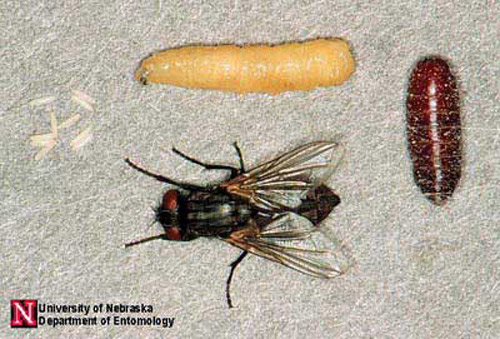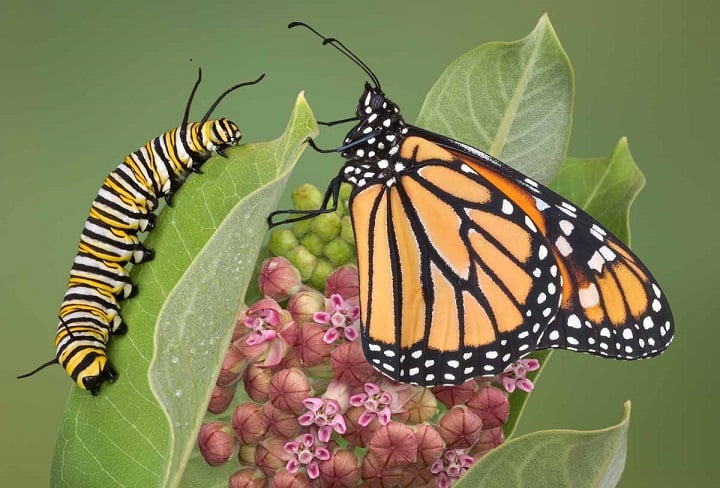Review of The Vital Question by Nick Lane, Part 2 of 3
Last week, I covered the fundamentals, the outline of the history of life on earth, including some unexpected findings and downright mysteries. I’ll continue here to talk about some of the broadbrush features in the history of eukaryotes as Lane paints the picture, and what he thinks the picture is telling us. Next time, I’ll talk about sex and evolvability.
Eukaryotes encompass the full diversity of macroscopic life on earth, every animal and plant, from yeast cells to jellyfish to sequoia trees to you and me. Strikingly, there are lots of things that all eukaryotes have in common (see last week’s column) that no bacteria or archaeans have.
It’s Lane’s ambition to explain some of the basic features of the eukaryotic lifestyle: birth and death, genetic recombination with two sexes, the association between sex and reproduction (which exists in almost all eukaryotes, but not in bacteria). He begins with the event that created the eukaryotes and gave them their advantage–the domestication of a sugar-burning bacterium that became universal energy source for all eukaryotic cells.
This view of life’s history, a 4-billion-year story, places the mitochondria right at the centre of the evolution of the eukaryotic cell…
This is the biggest new idea in the book. How well does it hold up?
Linear chromosomes with Introns
In prokaryotes, almost all the DNA comprises legitimate genes, that is, it codes for proteins. In eukaryotes, less than 5% of the DNA codes for protein. When this fact was first discovered in the 1970s, non-coding DNA was called “junk” or “parasitic DNA”. The story was that it served no function except to replicate itself, along for a free ride. Natural seleciton in prokaryotes is a race to the fastest reproducer, so they can’t afford parasitic DNA, and it has been selected out. But eukaryotes play a more sophisticated game (so the story goes), where “fitness” depends on survival strategies, and not raw speed of growth and reproduction. Hence eukaryotes don’t pay a high penalty for all this junk DNA, and it has accumulated in the genome.
I have never bought into this story. Just because we don’t know the function of a stretch of DNA doesn’t mean that there is none. And indeed, over the years, functions have been discovered for non-coding DNA. Some of it is translated into RNAs (ribozymes) which biologically active in many of the same ways as proteins. Some of it is “genetic capacitance”. The genome has learned to behave like a packrate, holding on to genes that were useful in the evolutionary past but not now, because the genome has learned from long experience that conditions are likely to recur some generations in the future, and better to carry extra baggage for a few million years than to have to start all over and re-invent the wheel if the need should arise again.
But all of it affects the way in which chromosomes spool and unspool along their length, opening as euchromatin which is active and expressed, or closing up as heterochromatin which is temporarily inactive. This is epigenetic control, an intricate logic that determines which genes are expressed where and when. Prokaryotes don’t differentiate into diverse cell types, and they don’t have life cycles that demand growth, maturation and development. But eukaryotes do, and hence every cell needs to express just that subset of the genome that it needs to do its job at the moment. I don’t find it at all surprising that 95% of the genome is devolted to the decision when and where to deploy the other 5%. An encyclopedia of human DNA by the ENCODE project estimated that 80% of genetic material has a purpose.
Lane believes that much of the non-coding DNA is indeed parasitic junk, and some of his argument about the origin of the cell nucleus, sex and aging hinge on this characterization. Compellingly, he notes that the total quantity of DNA varies enormously from one plant or animal to another, and appears to bear no relationship to the complexity of what that species does or how it lives. Looking at frogs alone, we see some species that have 100 times as much DNA as other frogs.
It can’t all be “necessary”. But that doesn’t mean it’s parasitic. Maybe there just isn’t much incentive to do the job of epigenetic regulation efficiently, so some species use much more DNA than others.
Lane describes a barrage of parasitic DNA that came with the mergers and invaders that formed the first eukaryotic cell. It was to protect against this invasion that the cell’s DNA was sequestered into a nucleus and surrounded by a membrane.
Every time a eukaryotic gene is transcribed, DNA is first copied as messenger RNA, and the RNA is then translated into a unique protein. But non-coding DNA is interspersed through as introns. So the RNA must be edited, snipping out introns and re-attaching the free ends until just the coding portion remains, ready to be run through a ribosome where it becomes blueprint for a protein. The editing takes place inside th nucleus, and the ribosomes are outside the nucleus, assuring that no un-edited RNAs are transcribed to protein.
In bacteria, it is efficient to have the DNA spread through the cell and conveniently interspersed with ribosomes. But in eukaryotes, it would be a mistake to transcribe the RNA before the introns are snipped out. So DNA is kept walled off in a nucleus, and RNA remains in the nucleus long enough for it to be snipped and edited.
Lane documents the evolutionary origin of introns and gene splicing, demonstrating convincinginly that introns originated with parasitic DNA that lived within the bacterial genome and politely provided their own scissors! What he doesn’t say is that this system of “genes in pieces” has major advantages in complex organisms. The self-splicing intron may have begun as a bacterial parasite and developed into a useful attribute in eukaryotes; or it may have evolved in eukaryotes as a useful innovation, and then crept back into bacteria as a parasite. But the system has advantages for eukaryotes that make me think that it is the product of natural selection. There is an economy in constructing genes from reusable modules that can be combined in different ways to perform different fuctions. There is an advantage in efficiency of evolution, as it is easier to combine functional pieces for a new application than to design a new protein from scratch. And, as I mentioned above, it may be that much of the DNA serves an epigenetic function, implementing a decision where and when to activate each particular gene.
One Wave of Cell Mergers, or Continuing Episodes?
Eukaryotes encompass the full diversity of macroscopic life on earth, from yeast cells to jellyfish to sequoia trees. Strikingly, there are lots of things that all eukaryotes have in common (see last week’s column) that no bacteria or archaeans have. There are also genes that clearly come from bacteria that characterize all eukaryotes, and so they were presumably present in LECA, the Last Eukaryotic Common Ancestor, “mother of us all”. And yet these genes come from at least 50 different bacteria, on widely separated bacterial taxa.
In Lane’s picture, all the merging of different genomes took place in an intense wave at the origin of eukaryotic life. In support of this picture, he notes that most of this diverse genetic legacy is amazingly well conserved across the full range of different eukaryotes–protists, animals and plants.
But I can’t resist digressing to tell you about the alternative picture, as presented in Lynn Margulis’s book with her son Dorion Sagan, Acquiring Genomes. They cite evidence that mergers and acquisitions have been continuing in an ongoing series of events that are rare only in a relative sense. Many, many genome mergers have taken place in the history of eukaryotic life, continuing into the recent past.
Many insects look entirely different in their larval form and their adult form.

The transition, for example from a caterpillar to a butterfly, is not a continuous change in shape. Rather, inside the crysalis, the caterpillar dissolves and its biomass is reformed into a butterfly [ref].

Margulis and Sagan take this as evidence that larva and adult were once different species, and that the two species became one when their genomes merged.
But why? What possible advantage can there be to making two species into one? My answer has to do with stabilizing populations. If the young and the mature form are in the same niche, competing directly with each other, then the larger, mature individuals have every advantage. Predators or disease or famine–all of the common causes of death hit harder against the very young. Very few of the young will have a chance to grow to maturity, and the population pyramid will be bottom-heavy with young ’uns, most of whom will never have a chance to grow up. If the larvae and the adult are not in direct competition, then it is easier to establish a stable population structure.
And how could it come about that a maggot’s genome would merge with a housefly’s, or a caterpillar’s with a butterfly? The answer is xenogenous fertilization. It is rare, but not all that rare, that an egg of one species can be fertilized by a completely different species.
In the Liverpool University lab of Don Williamson, successful hybridizations were achieved between distant species to produce fertile offspring. Sea urchins are echinoderms, ancient globes covered with spines. Sea squirts are chordates, “almost vertebrates” like us. This is one of the odd pairings that Williamson was able to hybridize.


If Williamson could do it in a few years of futzing around in the lab, then it’s likely that over hundreds of millions of years in the vastness of the oceans and the air, it has happened dozens, maybe hundreds of times that an egg of one species has been fertilized by a sperm of a very different species.
Williamson’s story is included in Acquiring Genomes, and his story of the Web of Life to replace the Tree was nicely summarized in a series of New Scientist articles a few years ago.
So what are we to make of these two very different stories about the Tree of Life? Both pictures seem compelling to me, and I would guess there is truth in both stories. Perhaps there was an intense wave of endosymbiosis around the time of the first eukaryotes. Perhaps there were many different competing mosaics of different bacteria and archaeans, unlikely hybrid monsters that struggled to keep peace among their parts, and struggled with one another. It seems that one of these won out, and the others died off without a trace. Her name was LECA.
This column is getting long, and there is more I have promised you: sex, parasitic DNA and a favorite topic of mine, the evolution of evolvability.
’Til next week…
